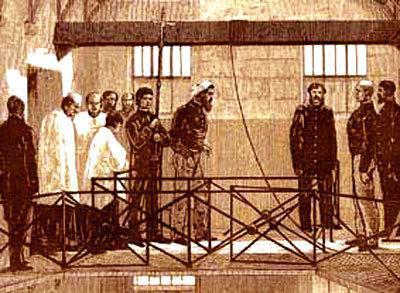well heck, I didn't even know he was missing
The headless remains of the infamous Australian outlaw Ned Kelly have finally been identified, officials said Thursday, solving a mystery dating back more than 130 years.
Considered by some to be a cold-blooded killer, Kelly was also seen as a folk hero and symbol of Irish-Australian defiance against the British authorities.
After murdering three policemen, he was captured in Victoria state in 1880 and hanged at Old Melbourne Gaol in November of the same year. But his body went missing after it was thrown into a mass grave.
The bodies in the grave were transferred from the jail to Pentridge Prison in 1929 and then exhumed again in 2009. The investigation into Kelly began when a skull believed to be his -- and stolen in 1978 -- was rediscovered.
Doctors and scientists at the Victorian Institute of Forensic Medicine identified his body, found in a wooden axe box, after a DNA sample was taken from Melbourne teacher Leigh Olver, Kelly's sister Ellen's great-grandson.
"The wear and tear of the skeleton is a little bit more than would be expected for a 25-year-old today," said institute director Professor Stephen Cordner.
The headless remains of the infamous Australian outlaw Ned Kelly have finally been identified, officials said Thursday, solving a mystery dating back more than 130 years.
Considered by some to be a cold-blooded killer, Kelly was also seen as a folk hero and symbol of Irish-Australian defiance against the British authorities.
After murdering three policemen, he was captured in Victoria state in 1880 and hanged at Old Melbourne Gaol in November of the same year. But his body went missing after it was thrown into a mass grave.
The bodies in the grave were transferred from the jail to Pentridge Prison in 1929 and then exhumed again in 2009. The investigation into Kelly began when a skull believed to be his -- and stolen in 1978 -- was rediscovered.
Doctors and scientists at the Victorian Institute of Forensic Medicine identified his body, found in a wooden axe box, after a DNA sample was taken from Melbourne teacher Leigh Olver, Kelly's sister Ellen's great-grandson.
"The wear and tear of the skeleton is a little bit more than would be expected for a 25-year-old today," said institute director Professor Stephen Cordner.




